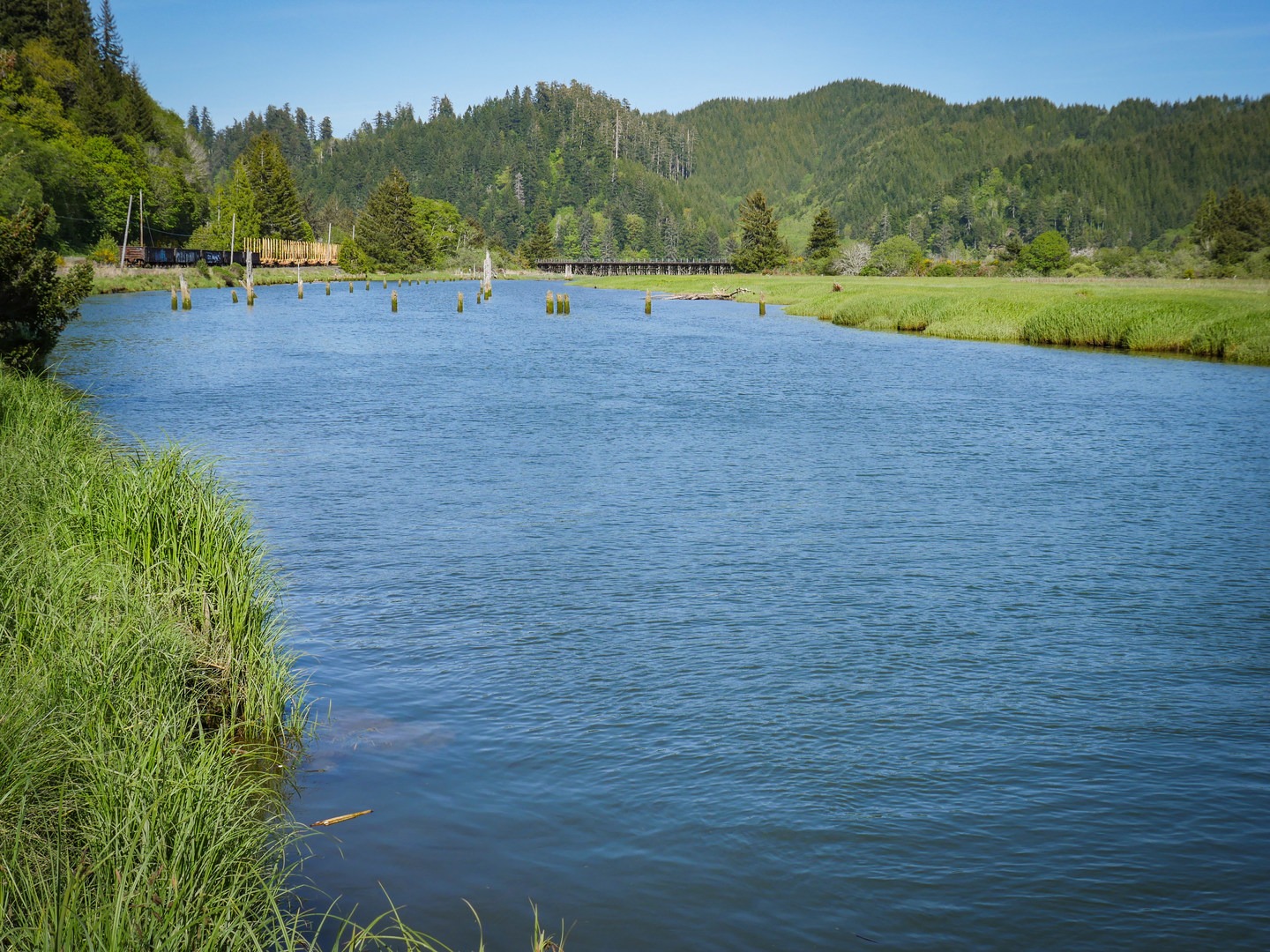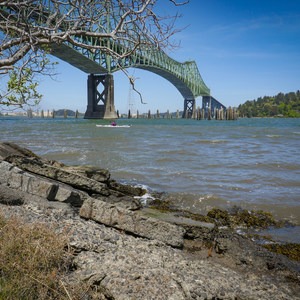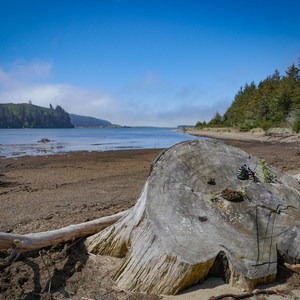You are here
The Smith River is a tributary to the Umpqua River, and it joins the Umpqua from the north across from Reedsport about 6 miles from the mouth of the Umpqua River on the Pacific Ocean. You can see much of the paddling route from Lower Smith River Road. Like many of the estuaries along the Pacific coast of Oregon, the Smith River Estuary is home to many species of birdlife, and paddling the Smith River here offers amazing opportunities to observe birds in their native habitat.
The route begins at the boat launch on the Umpqua, and you will need to start the route by crossing the Umpqua and heading into the mouth of the Smith River. The route then takes you between Bolon Island and Blacks Island. Bolon Island is home to an array of birds that typically nest in more remote areas, and the shorelines along the Umpqua River are home to hundreds of double-crested cormorants. Something you may observe on and around the island is that the cormorants nest close together, each building a platform of sticks in the trees called a rookery. These types of rookeries are usually too remote for easy viewing, which makes the Bolon Island Day Use Area a unique opportunity for viewing. Bolon Island is also noted as an excellent location for soft-shell clams.
If you wish to avoid the paddle across the Umpqua, which may be somewhat difficult depending on wind and tide conditions, you may shorten the route and use the Bolon Island County Boat Ramp as a launch point and continue up the Smith River Estuary from there. Starting at Bolon Island may also allow you more time to enjoy the wildife and scenery around and on the island.
Between Lower Smith River Road and Blacks Island are remnants of docks and a historic mill next to the railroad that parallels the road. Once you are upstream of Bolon Island and Black Island, continue up the Smith River and enjoy exploring the estuary landscapes and various types of birdlife, including egrets, herons, eagles, and cormorants. If there is enough water and the tides are not too low, you may be able to enjoy paddling up several of the sloughs of the river—the most notable being the Hudson and Otter sloughs.
If you have time and like to visit waterfalls, you can drive up Lower Smith River Road and spend time at Smith River Falls. There are also camping options near the falls, which depending on the time of year may be less crowded than the popular state parks along the coastline.
Tides and winds can be very strong on the Smith and Umpqua rivers at times, so paddlers should always be aware of the tide tables and wind forecasts and plan accordingly. If you wish to camp in the area, note that free and dispersed camping options are extremely limited near the Smith River Estuary. State park and county camp areas are the most available camping options, and sites can fill up quickly in the warmer spring and summer months. Where possible, make reservations in advance.
Logistics + Planning
Current Weather: Powered by Dark Sky







Preferable season(s)
Congestion
Parking Pass
Open Year-round
Pros
Cons
Pets allowed
Put-in location (lat, long coordinates)
Take-out location (lat, long coordinates)
Water Temperature
Features
Trail type
Access
Typically multi-day
Shuttle required
Site characteristics: Water
Portage required
A profound concept originally envisioned by governor Oswald West, in 1967 the Oregon legislature ultimately realized his vision of making the entire Oregon Coast forever open to the public in a piece of landmark legislation titled the Oregon Beach Bill, officially making all 363 miles public land. "The People's Coast" is truly a one-of-a-kind coastline, a unique blend of mountains and rocky stacks, towering old growth forests, marine sanctuaries, tide pools and kelp forests, charming towns, historic fishing communities, world-class golfing, breweries, and simply jaw-dropping scenic beaches. We encourage you to plan your next trip at visittheoregoncoast.com or by calling (541) 574-2679.
























Comments
Sign In and share them.